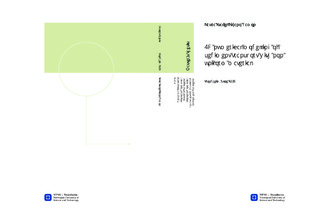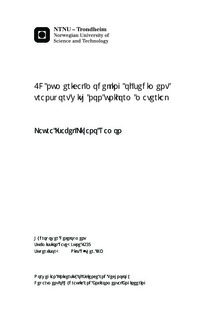| dc.description.abstract | Numerical modelling is nowadays an important tool for predicting river flows and sediment transport. Two dimensional (2D) models give more detailed information than the often used one dimensional (1D) models, and 2D models have the advantage over three dimensional (3D) models that the simulation times are reduced, and therefore could be more attractive to use in many applied cases, where 3D flow effects are not so important. When using numerical models in predicting sediment transport, the non-uniformity of the bed material has to be considered, especially in natural environments, where it is very likely to have different particle sizes. Sediment transport is highly dependent on the grain size distribution of the sediment mixture of the river bed. The main goal for this thesis was to see if the 2D model CCHE2D could assess accurately the sediment transport in a case with non-uniform material. A physical model study carried out by S. Lanzoni in 2000 was selected for this purpose. In the laboratory, a straight flume with a bimodal sediment mixture was used. Experiments on sediment transport were conducted in the flume, where bed load was the dominating transport mode, alternate bars developed during the experiment and equilibrium conditions were reached. The data from the physical model was the input for the numerical model used in this thesis.CCHE2D was capable of replicating the bed load transport rate in the flume, with only a 1.5 % difference between the measured average value and the simulated value. From the numerical modelling study, it was concluded that the modified Ackers and White formula for calculating sediment transport capacity gave the best results compared to the other available formulae in CCHE2D. This formula includes the hiding and exposure effects, which are important for a sediment mixture like the one used in the studied case. During the study, the main parameters that influenced the sediment transport process were identified. The numerical simulations proved to be very sensitive to the roughness height, the adaptation length and the mixing layer thickness. The study showed that the bed load transport rate calculation is also strongly dependent on the boundary conditions. Uncertainties on parameters and boundary conditions were solved by calibration and sensitivity analyses. The CCHE2D model could be applicable to cases where depth averaged values are accurate enough for the prediction of the physical processes that are being modeled, especially, in cases where helical flows have minor influence on the results. The time required for the simulations and the computational resources were adequate for carrying out this study. However, an applied case with a more complex geometry would require much more computational resources. Additionally, assessment of the parameters requires measured data and calibration. | nb_NO |

